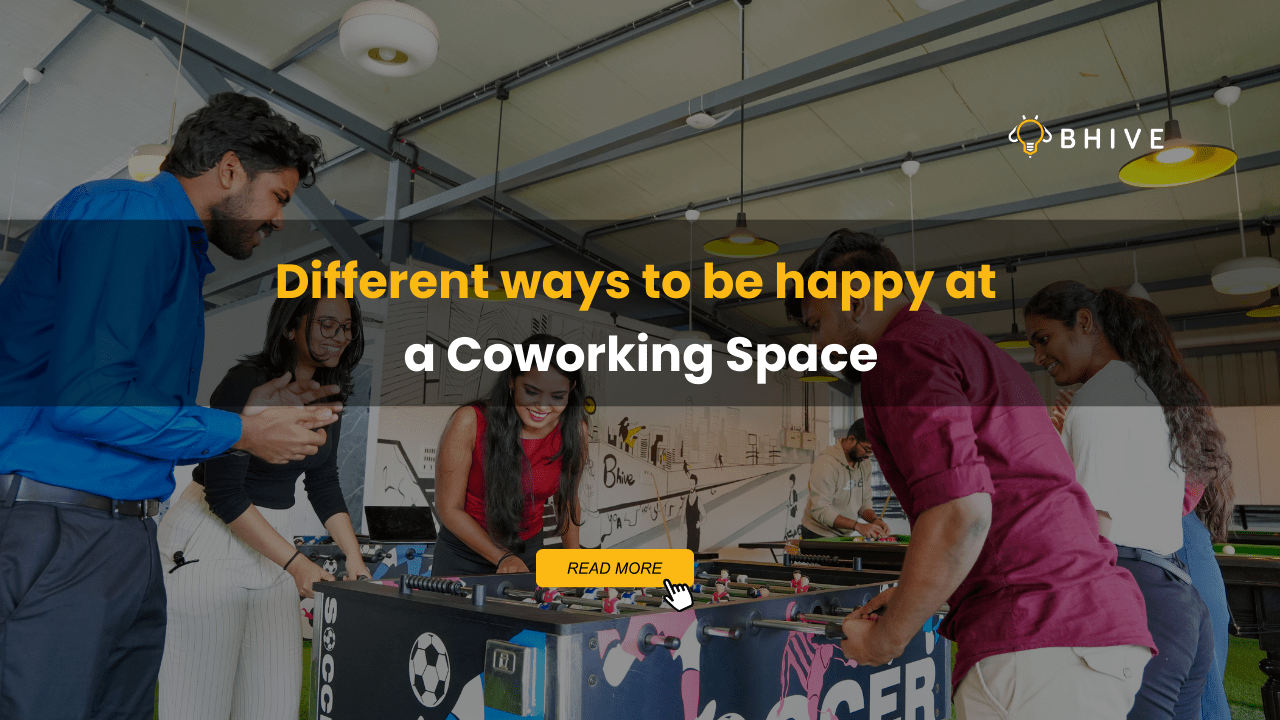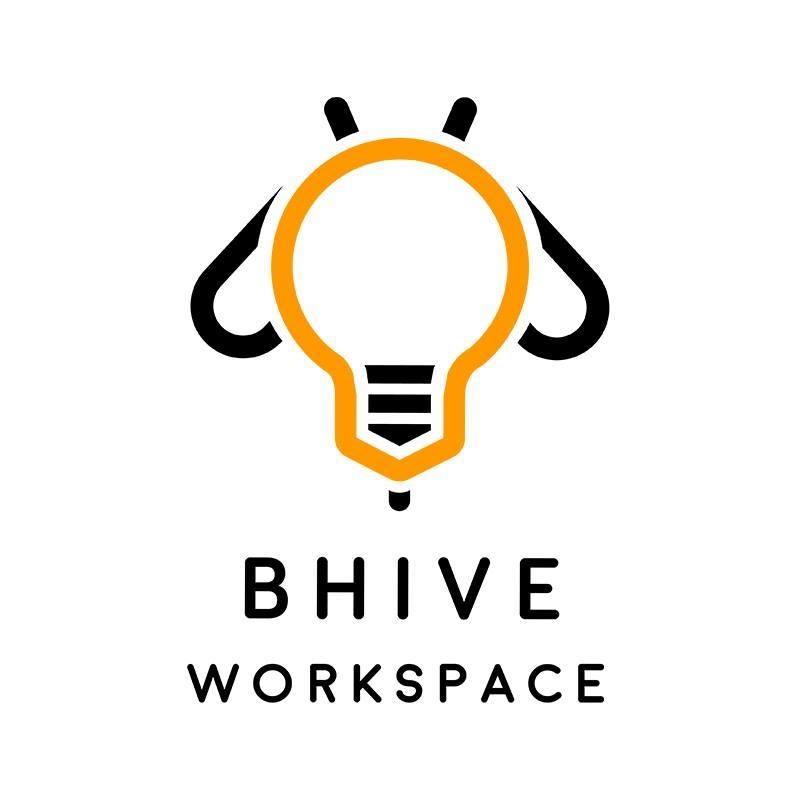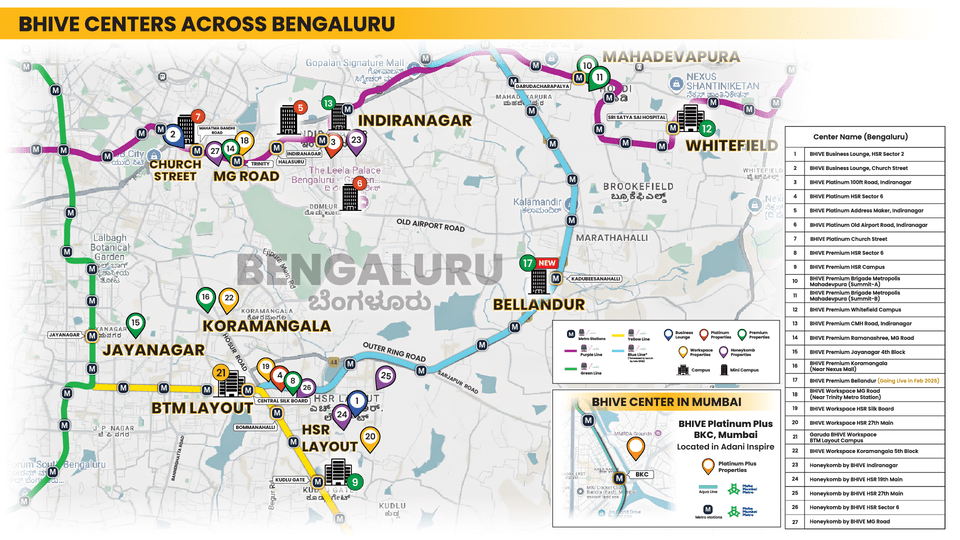Different ways to be happy at a Coworking Space!

In a 2015 member survey of the global coworking community, 89 percent of respondents stated that they were happier due to coworking. This impressive stat comes as no surprise to coworking insiders, who understand first-hand the positive impact coworking can have on people. BHIVE Workspace.
Steve King, partner at research and consulting firm Emergent Research, says putting numbers on happiness is no easy task. But that coworking has shown to enhance social experiences, enable more networking. Additionally providing opportunities to learn new skills, all of which can lead to increased happiness.
“Happiness is a hard topic for us because it’s pretty squishy,” he says with a laugh. “We’re data people, but the truth is, there’s a whole body of research in the last five years about happiness and work. The more researchers dig into it, we’re discovering what Mary Poppins and Snow White knew all along. The more productive you are, the happier you are, with a spoonful of sugar and a whistle while you work.”
In their research, King and the Emergent Research team found out just how important the social aspects of coworking are. While studying the business networking that takes place in coworking spaces, they asked questions about social relationships. What they found is that, for many, the social side of coworking outweighs the business networking side.
“The number one complaint from people who work from home is loneliness,” says King. “When you talk to people who worked at home and have gone back to a traditional work environment, they’ll often tell you it was loneliness. The lack of a social environment that pushed them back to traditional employment. We’re not at our best unless we’re happy at some level and we’re not happy unless we have relationships with other people.”
King acknowledges that they did discover what he calls hermitpreneurs. These are people who don’t want interaction with others. But he estimates that these people only make up about seven percent of independent workers.
“Outside of the hermitpreneurs, you’re not going to be happy unless you’re around people,” he says. “You’re not going to be happy unless you have human relationships, and the coworking world provides that.”
That happiness boosts productivity makes sense, and there’s data to back it up. A study by economists at the University of Warwick found that happiness led to a 12% spike in productivity, while unhappy workers proved 10% less productive.
This intersection is where coworking shines by enabling happiness and productivity in one package. Fast wi-fi is great and cool desks are nice, but happiness is an even stronger driver of productivity. This leads to a better sense of self. As King puts it, “Happiness comes from feeling good about yourself every day.”
The need for workplace community is something the Emergent Research team saw in coworking space members of all types. From freelancers and independent workers, to telecommuters working remotely for a company, small businesses and startups. They all responded that it was very nice to have a broader social network. This points, in part, to a larger need for more community ties, traditionally found through things such as churches and local groups.
“I’m not ready to say that coworking is the new church,” says King, “but people are looking for tribes, and they’re looking for community, and coworking is now offering that to a class of worker.”
While community is driving coworking from the inside, the face of coworking is changing. Once driven almost exclusively by independently-owned spaces, corporate coworking has emerged as a macrotrend, with a rise of corporately-owned spaces and a growing number of companies looking to coworking spaces rather than traditional real estate to avoid being locked into a 10 year lease.
Recently, office supplies retailer Staples partnered with Workbar to create coworking spaces in several of its locations. Last month, Verizon and New York-based coworking company Grind opened a new coworking space inside Verizon’s former headquarters building at 140 West Street across from One World Trade Center. What the future holds for coworking remains to be seen.
At the upcoming Global Coworking Unconference Conference (GCUC) in Los Angeles, which runs May 3-6, King is presenting a session on the future of work and how coworking fits into it. The conference, which has its roots in a casual meetup in Austin, Texas, has grown into an international conference series, with events in China, Australia, Southeast Asia, Brazil and Canada. It provides a unique opportunity for the global coworking community to connect in real-life to share resources, ideas, best practices, challenges, and visions for the future of coworking.
In his session, King plans to talk about how technology and global competition have combined. This shifts the way industries and companies are organized, including the growing use of partnering third parties and contingent workers. He’ll also explore the atomization of work, where work is being parsed down into smaller and smaller units, and what these things mean for coworking space operators and members.
“Firms are becoming more permeable, they’re becoming less rigid to outsiders. This leads to blended teams and a growing need for independent workers and contingent workers,” he says. “There are a lot more calls for small businesses, and micro business, and independent workers. All those people need to have a place to work.”
As the coworking industry continues to grow, a natural segmentation is occurring, with different types of coworking spaces catering to different types of workers. As King points out, you can now have a WeWork that caters to startups right next door. To a cooperative coworking space that caters to artists, and both of them can be thriving.
This segmentation is a natural evolution for any industry if it grows big enough and is successful enough, King explains. Coworking is already hybridizing and segmenting to serve different markets and communities around the world.
“We’ve seen this in all the industries we’ve studied,” he says. “You get to the point where you get past the early adopters. Coworking has moved past the early adopters and started to segment. As long as the industry continues to grow, there’s room for multiple segments. And, room for multiple segments to be successful.”’
Article by:
Follow @CatJohnson on Twitter








